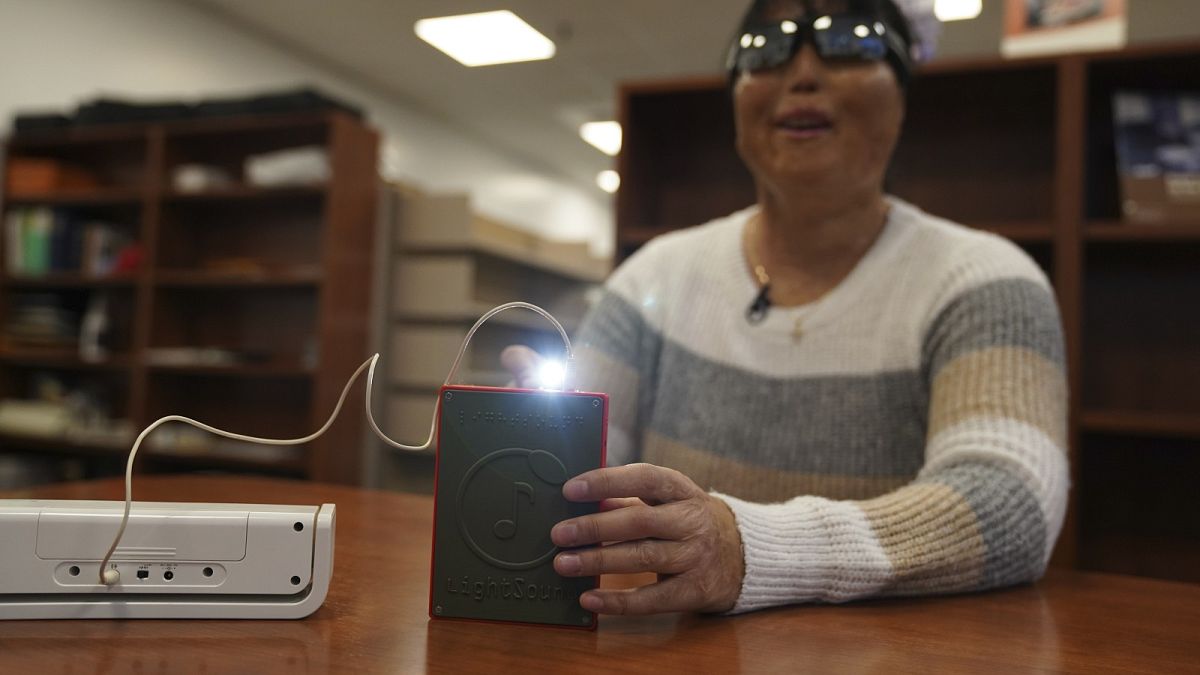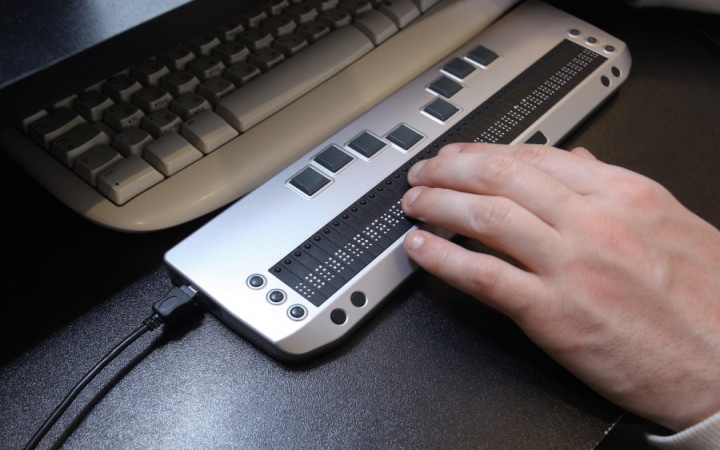Enhancing Lives With Advanced Assistive Tools for the Blind
The integration of sophisticated assistive tools for the blind is changing exactly how individuals experience their environments and connect with their areas. Developments such as increased reality smart glasses and innovative digital travel aids not just promote navigation yet additionally boost overall lifestyle. These innovations foster a sense of freedom and self-efficacy among users, enabling them to undertake everyday jobs with newly found confidence. Nevertheless, the effects of these improvements extend beyond plain performance; they test social assumptions of handicap and independence. What does this development suggest for the future of assistive modern technology and its function in encouraging individuals?
Overview of Assistive Devices
Assistive tools for the blind include a diverse series of modern technologies and devices created to enhance freedom and enhance the lifestyle for people with visual disabilities. These tools accommodate numerous demands, from navigation and mobility to communication and day-to-day job monitoring.
Among the primary classifications of assistive devices consists of wheelchair help, such as white canes and overview pet dogs, which aid customers browse their environments safely. Electronic traveling aids, outfitted with sensing units and audio comments, likewise play a significant duty in wheelchair enhancement.
Additionally, devices that help with everyday living activities, such as flexible kitchen area tools, Braille tags, and speaking watches, equip individuals to do jobs separately. Communication aids, consisting of screen visitors and Braille display screens, help with access to info and enable individuals to involve properly with the digital globe.
Additionally, low-tech remedies like amplifying glasses and large-print products continue to be essential for numerous users. Collectively, these assistive devices serve not only as functional devices yet likewise as vital enablers of autonomy, cultivating greater engagement in a world that frequently prioritizes sighted experiences. Their integration right into day-to-day live is essential for promoting inclusivity and enhancing total wellness for those with visual problems.
Cutting-edge Technologies being used
Advancement in technology has significantly changed the landscape of devices readily available for people with aesthetic problems. Amongst the most notable advancements are wise glasses integrated with augmented fact, which supply real-time navigation assistance and item acknowledgment. These devices take advantage of advanced video cameras and expert system to provide auditory cues, improving the user's spatial awareness and autonomy.
In addition, mobile applications have arised as effective resources, enabling customers to recognize currency, read text out loud, and navigate strange atmospheres via spoken guidelines. Tools such as Braille display screens and refreshable Braille gadgets remain to develop, supplying smooth connection with smart devices and computer systems, therefore boosting communication and accessibility to info.
Wearable technology, including smartwatches furnished with voice-activated features, further empowers individuals by facilitating quick access to notices and signals without requiring aesthetic engagement. Responsive maps and 3D printing are likewise gaining traction, offering concrete depictions of areas that aid in orientation and wheelchair training.
Jointly, these ingenious innovations not just improve the every day lives of aesthetically damaged individuals yet also foster higher self-reliance, inclusivity, and interaction with the wider community, therefore improving perceptions of access. (Speech-to-text devices for low vision)
Individual Stories of Empowerment
Empowerment frequently arises from personal experiences that highlight the transformative influence of technology on people with aesthetic disabilities. Take, as an example, the tale of Sarah, a young artist who reclaimed her passion for painting via making use of a smart walking cane geared up with challenge discovery. This tool not just promoted her wheelchair but instilled a newly found confidence, allowing her to browse public rooms individually and pursue her creative endeavors.

These narratives emphasize the profound impacts that advanced assistive gadgets can carry life. By enabling people to overcome barriers, technology fosters a feeling of freedom and self-respect. Such empowerment stories serve as a testament to the capacity of innovation, highlighting how the right devices can dramatically improve high quality of life and open doors to brand-new possibilities for those with visual disabilities.
Advantages of Advanced Solutions
How can advanced services basically improve the lives of people with aesthetic impairments? The combination of cutting-edge innovation right into assistive tools substantially transforms daily experiences for those impacted by vision loss. These advanced services use unmatched autonomy, making it possible for individuals to navigate their settings with self-confidence. Instruments such as smart walking canes furnished with sensors, navigating apps, and wearable modern technology are developed to give real-time responses, improving spatial understanding and minimizing the dangers connected with mobility.
In addition, advanced assistive innovations cultivate social incorporation by promoting interaction and communication. Voice-activated devices and applications allow individuals to gain access to details and engage with their environments separately, breaking obstacles that previously impeded their involvement in educational, specialist, and social setups.
On top of that, the personalization and versatility of these services deal with the varied demands of individuals, thereby boosting their general high quality of life. Improved capability, such as things acknowledgment and text-to-speech capabilities, empowers people with visual disabilities to carry out tasks that they may have as soon as located challenging. Ultimately, progressed assistive technologies not only improve self-reliance and safety but additionally advertise self-respect and self-regard, enabling users to lead fulfilling lives.
Future Trends in Assistive Technology
As innovation remains to progress, the landscape of assistive tools for the blind is poised for remarkable innovations that will certainly additionally enhance ease of access and self-reliance. Arising patterns in assistive innovation show a shift toward raised combination of expert system (AI) and artificial intelligence, making it possible for gadgets to adjust to specific blue glasses user needs in real-time. These technologies are anticipated to help with more intuitive navigation systems that can identify challenges and give audio feedback, dramatically enhancing exterior movement.
Additionally, the growth of wearable technology, such as wise glasses equipped with augmented fact, will certainly permit customers to obtain contextual information regarding their surroundings, thus enhancing their spatial recognition. Improvements in haptic modern technology promise to develop tactile responses devices, allowing individuals to view info with touch, enhancing learning and interaction with their setting.
Telecommunication advances are additionally leading the method for remote support options, where experienced specialists can provide support by means of video calls, ensuring support is readily obtainable. As these fads unfold, the future of assistive devices for the blind will definitely cultivate greater autonomy, equipping people to browse their globe with confidence and simplicity.

Verdict
The combination of innovative assistive tools for the blind represents a significant innovation in cultivating self-reliance and boosting lifestyle. By making use of cutting-edge modern technologies, these tools encourage individuals to browse their atmospheres with greater self-confidence and autonomy. As the field proceeds to progress, recurring research and growth will likely yield a lot more advanced services, further changing the lived experiences of people with aesthetic impairments and promoting a greater sense of incorporation within culture.
The assimilation of sophisticated assistive devices for the blind is transforming just how individuals experience their surroundings and engage with their communities. The assimilation anti blue light glasses of innovative modern article technology right into assistive devices substantially transforms daily experiences for those influenced by vision loss.As modern technology continues to develop, the landscape of assistive gadgets for the blind is positioned for amazing developments that will certainly additionally improve accessibility and freedom. Arising patterns in assistive technology indicate a shift toward raised combination of man-made knowledge (AI) and equipment understanding, making it possible for tools to adapt to individual customer requires in real-time.The integration of advanced assistive tools for the blind represents a substantial improvement in fostering self-reliance and enhancing top quality of life.